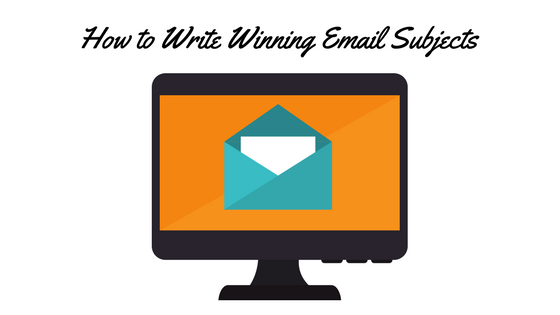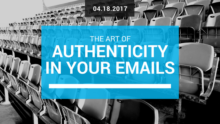Author Archives: Adam Napolitano
A Simple Trick to Breathe Life into Science-Heavy Health Supplement Copy

If you’ve ever written copy for a health supplement, there is a particular portion of your supplement sales copy that can get a little boring.
I’m referring to the portion that goes into detail about the mechanisms or physiologic processes going on inside the body at a cellular level.
Can’t read it now? Pin it and read it later!
Why Your Readers Hit the Snooze Button
Unless your reader is interested in biology, chances are this is the portion of your copy that will have your readers flip the page (or exit out). This is because this particular portion of any health supplement copy is science heavy.
The language used is often dry and boring, and you run the risk of confusing your prospect.
When your prospect is bored, they’ll take off.
This portion of your health supplement copy is important enough that you can’t just do without it. So what’s the solution? How do you hold the attention of your prospect, making sure they stick around and consume the rest of your sales message?
Interesting Copy in One Easy Step
Here’s a simple strategy sure to “liven up†science heavy sales copy: focus on strong action verbs.
Here’s an example:
Sentence 1: Studies show that this protein makes us age faster
Sentence 2: Studies show that this protein accelerates our age at an alarming rate
See the difference?
A minor tweak in wording makes a big change in impact.
Accelerate is a strong action verb that conjures up vivid imagery. This makes me think about street car racers or that one time I was driving down the highway and had to punch the gas pedal to overtake another driver. It is a very visual word that engages your mind and imagination, and your prospect will start visualizing themselves in different scenarios.
When you couple a visual action verb like accelerate to a process like aging, it drives home how fast and urgent this process or problem may be. It’s a powerful concept guaranteed to bring your sales copy to life, helping it jump off the page.
This one simple trick can liven up the most boring portions of your copy.
Strong Visual Action Verbs to Include in Your Health Supplement Copy
I hope this simple technique helps you reinvent the way you tackle the dry, science-y portions of your copy. But to help you just a little bit more, here are a few more examples of visual action verbs you can use to spruce up your health copy. Use these to get your creative juices flowing!
- Ignite
- Rev up
- Slow to a crawl
- Glide
- Slide/slid
- Slices
- Flow
- Slip
- Floods
- Stokes the flames
- Extinguish
- Coats
- Gobbles
- Short-circuits
- Break free
- in Uncategorized by Adam Napolitano
Don’t Let a Good Story Ruin Your Sales Copy (A Hard Lesson in Story Seduction)

There’s power in a good story. Every copywriter knows that. Even marketers and business owners know just how convincing a good story can be.
When done correctly, a good story is an incredibly powerful engagement tool. It will push all the right emotional buttons and get your prospect to buy your product. When done correctly.
But be warned…if you aren’t careful, this powerful tool could work against you and hurt the response rate of your sales copy. The key to making a story work for you and boost sales is all in the “bridge†as you’ll see in a moment.
First, what should you do when you’re equipped with a really cool story and want to maximize it’s potential?
Pin it & Read it Later
3 Rules For Incorporating a Good Story in Your Sales Copy
So you think you have a good story, but is it a powerful engagement tool for the sales copy you’re writing? Here are 3 rules to run your story through to make sure it’s working to get your prospects to buy your product.
1 ) Your Story is Relevant
This goes without saying. In order for your story to work for your sales copy, it has to be relevant to your ideal customer, the problem you’re helping them solve, and to the solution (aka your product).
2) Your Story Has to be Interesting and Compelling
The best stories are always emotionally charged. Does your story spark an emotional response with your reader? Is it a positive or negative response? Both can work well when used in the right context.
3) Your Story Should Build a Strong Bridge Between the Problem and the Solution
This is the most important point! If your story passes both point 1 and 2, think about how you can utilize it to bridge the problem to the solution. This was something I had to learn the hard way.
How a Good Story Should (and Shouldn’t) Bridge the Problem and the Solution
I had a client who wanted me to write a newspaper advertorial for their new brain health supplement. The target market for this supplement were elderly men and women who were worried about getting older and the health complications that come with age, such as the decline of cognitive brain function.
During my research, I found a cool story about these 5 Tribes of Super Agers, which are 5 different ethnic groups from different parts of the world who are living active, healthy lives well into their 90s and beyond. The story is relevant to my target audience, and it’s interesting and compelling enough to rope in any reader.
Unfortunately, the advertorial completely bombed (you can read all about it in this article) for a number of reasons. After some time reflecting and analyzing the copy, I’ve pinned down the exact reason why this advertorial flopped. The transition from the 5 Tribes of Super Agers story to my client’s product was weak.
What Bridge?
After diving into my super cool story about these 5 Tribes of Super Agers, it finally came time for me to introduce the solution (my client’s product). I had hooked my readers in with this cool story and they were expecting a secret as big as the map to the fountain of youth to be revealed.
When the big reveal came, the solution I offered their problem (how to live a healthy, active life well into their 90s) was to have “better brain healthâ€.
Better. Brain. Health.
Pardon my French, but no shit.
Instead of bridging the problem to a solution, I practically threw my readers off the edge of a cliff without a parachute.
The Solution
I wasn’t willing to change my strategy and let go of the 5 Tribes of Super Agers story. It’s a good story. So how do I work with it?
What if I was able to tell my readers that one of the main ingredients found in my client’s brain supplement is the most common thread they found amongst these 5 Tribes of Super Agers who seemingly have nothing else in common?
The answer: it changes the whole presentation of the supplement.
If I said that the ONE thing researchers discovered these 5 Tribes of Super Agers have in common is that they consume way more *insert special nutrient* than the average person, it sets the stage. This IS the secret to HOW they are living such long and healthy lives with no memory issues.
This also sets me up for a smooth transition into my client’s supplement, saying this new formula that was just released not only contains this nutrient, but it contains a higher concentration of this nutrient than any of its competitors or any other formula on the market. And it was even formulated in a way that allows for faster and complete absorption when it’s ingested.
This forms a strong, direct link transitioning from the problem my audience is facing to the solution found in my client’s product, by using the 5 Tribes of Super Agers story as a solid bridge.
In Conclusion
If you’re reading this now, you may be thinking “well… yeah isn’t that obvious?â€
But while I was cranking out this copy, I got too enamored with the coolness of the story itself. I relied too much on the story to do most of the heavy lifting that I overlooked the weak connection between the story, problem, and solution.
Having a good story can help catapult your sales copy to success. Getting too carried away with it may blind you to the importance of having a good story, which is to use it to bridge the gap between problem and solution…and boost your sales as a result.
Why My Copy Completely Bombed and 3 Tips to Make Sure Yours Won’t

A lot of copywriters like to do breakdowns of winning sales copy, or promotions they wrote that beat the control. While we can get a lot of valuable information from studying winners, this breakdown you’re about to read showcases an advertorial that I wrote for a health supplement that completely bombed and missed the mark.
Why am I sharing this? It isn’t easy for me (and my ego) to share my failures, but after some time analyzing and processing, I’ve identified where I went wrong. In this article, I’ll be rounding up my mistakes and sharing 3 tips to make sure your copy won’t miss the mark.
Pin it & Read it Later:
Why My Copy Completely Bombed and 3 Tips to Make Sure Yours Won’t
In this breakdown, I’ll be focusing on the headline, subhead, and the lead of this advertorial.
The Set Up

This advertorial is for a brain health supplement so we’re looking at an audience of an older demographic, ages 60 and older. Both men and women are represented here, but this advertorial does skew a little in favor of men.
This supplement is for people who are already experiencing some type of brain issues (primarily with memory), or are worried about experiencing these brain issues due to their advancing age and are looking for a preventative solution.
Disclaimer:
This advertorial did one test run in a newspaper publication and the call to action was to dial a 1–800 number to place an order. This was not an online advertorial so there was no link sending them to a website or online sales page where they can find more information. This means there are pieces of analytical data that are missing from this advertorial (i.e: how many people saw this article, how much time was spent on the page etc…).
Now let’s get right into it!
The Headline

This is a fairly weak and generic headline. The main benefits mentioned in this headline are “Thriving Health†and “Peak Brain Performanceâ€â€¦ what does that mean?
These are very vague terms. “Thriving Health†could be mean so many different things, and so can “Peak Brain Performance†(does this mean I’m going to be more intelligent? Be in a better mood? Etc…) The headline should be more benefit specific, focusing on memory specific brain issues, even the fear of losing independence.
Which brings me to the first tip…
Copywriting Tip #1: Make your headlines more benefit specific
How can we achieve that in this particular case?
This headline could be better if it focused on brain issues such as fading memory, since this is a concern for this demographic. Another angle that could come into play is one of dependence. Losing independence is a fear for this particular audience as they wouldn’t want to rely on their children or spouse (or worse — be put in a nursing home).
The Subhead

The subhead, in my opinion, is pretty strong. It has a good amount of intrigue and curiosity with the 5 tribes of “Super Agersâ€. The latter half of the subhead (laughing, dancing etc…) is also very visual which is a great engagement device.
I don’t think the subhead hurt the performance of this advertorial, however, if there is one thing I would change about it, it would be experimenting with different visuals and activities.
Like I mentioned, both men and women are included in this demographic but the advertorial does skew in favor of men. Activities like dancing and drinking martinis may not appeal to a lot of men who are in this audience.
Copywriting Tip #2: Include visuals and activities that appeal to your demographic
In this particular advertorial, including activities that are more relevant to the audience (activities that may be more appealing to men who are 60+) could make a positive difference.
The Lead

Now the biggest mistake in this advertorial wasn’t in the headline or the subhead, but in the lead. Specifically, when I transitioned from the story of the 5 tribes of Super Agers into introducing the product.
I spent some time building the 5 tribes of Super Agers to make it seem like there’s going to be a big reveal, a huge shared secret behind why these 5 isolated tribes of Super Agers are able to live longer and healthier lives.
But when it came to the big reveal… it just came down to having remarkable brain health. That’s it.
Well, no shit.
It’s kind of common sense that if you’re going to live to 90 years old and beyond, if you’re going to be dancing, drinking martinis, cooking, etc… you’re going to need to have good brain health. That’s not a shocking secret that no one has seen or heard of before.
If you were reading this advertorial, you’d probably be annoyed that the big reveal was something you (and the general public) had always known all along.
How do we fix this?
Copywriting Tip #3: Make your big reveal worth your reader’s time
What would have made a much stronger connection was if the shared common trait of those 5 tribes of Super Agers, consumed higher than normal levels of one of the key ingredients found in my client’s brain formula.
This will give a direct connection to lead into intense studies that show that these 5 super agers were consuming way more tyrosine (that key ingredient) than the rest of the world’s population, and they attributed this to their remarkable memory and brain health.
This will make a stronger case for my client’s brain formula, as it just so happens that this new product has super therapeutic doses of tyrosine to rejuvenate brain health.
It makes it worth your reader’s time when the big secret and shared common trait of these 5 tribes of Super Agers was the main ingredient of the supplement.
Bonus Tip: Get REALLY specific
Even though I love the super agers story and it is very relevant to this audience, it is not really specific to brain issues and overall brain health. There could be a good amount of the audience who think “I don’t care about dancing. I just don’t want to forget who I am and lose my memory.â€
We could use the Super Agers story, but be more specific and boil it down to the simple, innate desires and fears of the audience. Instead of relating it to activities, there could be more focus on brain health, memory, and cognitive performance.
The Conclusion
If you’re in the health or supplement market, don’t be afraid to ask your copywriter about some of their duds. Failure is a part of learning and growing as a copywriter. Let’s face it — the best copywriters in the world produce copy from time to time that completely misses the mark. A great copywriter will acknowledge these mistakes and grow from them. The key here is:
- To acknowledge when a mistake is made and identify where we went wrong.
- To be able to go back, analyze the mistake, and fix it.
Sales Copy Breakdown: Longevity Max Sales Email-Dr. Gundry
1 Simple Technique for Breathing Life into the Most Boring Part of Your Health or Supplement Sales Copy.
To make sure you get notified every time I produce a new piece of content, head over to https://writinginfire.com and sign up to my email list. You’ll also receive a free copy of my PILL framework for writing supplement sales copy that turns ice cold prospects into customers.
- in copywriting , sales skills , Selling by Adam Napolitano
Giving Value is Not Enough. You MUST Sell! Here’s why…

Give value…
Deliver value…
How much value do you provide?
Give value first, and the money will follow…
This mantra is seared into our brains, chanted over and over again in our Facebook feeds and email inboxes. It seems as though “giving value”, a somewhat arbitrary concept, is the cornerstone of doing business nowadays, especially online.
And for good reason. With so many unscrupulous individuals, scam artists, and dishonest businesses trolling the web, providing VALUE to your audience before asking for the sale is often a smart business strategy. This approach allows you to build a trusting relationship with your prospect, making for a smoother transition to the sale. Done right, this warms them up and primes them to buy.
But here’s where some entrepreneurs go wrong. They get so caught up in the “value giving phase”, they forget about or neglect the most important part of the process: The SALE!
This leads to a deadly mistake: relying only on the value you provide to sell your product or service.
I hate to break it to you, but when push comes to shove, nobody really cares how much “value” you’re giving them. Sure, they are grateful and appreciative. Many will even tell you so. They will engage with you and be some of your biggest fans. But this alone does NOT guarantee they’ll ever spend a single dollar on your products or services.
Your audience will ONLY buy from you if they believe one of the following to be true:
- Your product or service will help them obtain something they desperately want.
- Â Your product or service will solve a problem that’s been causing them deep pain or discomfort.
That’s it. It’s that simple. The amount of value you provided, the amount of goodwill you created up to this point means nothing, if you fail to meet one of these two conditions with whatever you’re selling. This is why making an effort to actively SELL your shit is critical to your success.
And honestly, it doesn’t need to be that difficult or complicated. You don’t need to be a master copywriter or marketer to successfully sell your stuff. Start with the simple PAS framework, and you’ll have a solid selling foundation in place every time.
The PAS model is a powerful marketing formula popularized by Dan Kennedy, considered by many to be one of the greatest direct response marketers of our time. If you’re not familiar with the PAS formula, here’s a quick breakdown for you:
P: Identify an intense problem or pain point your prospect is experiencing.
A: Agitate that problem. Twist the knife. Point out in vivid detail how this major problem is wreaking havoc in their lives. (Or how it will blow up if they don’t do something about it)
S: Tell them or show them how you can SOLVE their problem. Offer this solution (your product or service) for sale.
This is a very basic explanation, but the truth is this all you need to get started. If you take the time to flesh out this simple 3 step formula with consistency, you’re almost guaranteed to make some sales. This is assuming of course your offer isn’t complete shit and that you’re targeting the right people with your message.
Just last night, I attended a Facebook live webinar conducted by a pretty well-known influencer in the social media space. The first half of this live session was amazing. He delivered incredible value (yes, I know I said it!), gave simple and actionable tips for getting quick results, and his energy and passion were off the charts. Dude was electric!
It was one of the most interesting and engaging live trainings I’d attended in quite a while. But that quickly changed once he transitioned into his “pitch.” Boom! Instant shift in energy. Maybe it was partly due to nerves, which is totally understandable, especially if this was his first time selling in a live format. Not sure if it was or not. But here’s what struck me as odd:
He seemed to rush through his product pitch. He presented 3 different options at 3 different price points. But he gave very few details about what was included in each option. And guess what? If people are confused or unsure about what exactly you’re offering? They’re not gonna buy.
Not only that, he did not follow the PAS formula I just talked about. Yeah, he kind of identified the problem…but he didn’t agitate it. And he did not clearly and persuasively communicate the specific benefits his customers would receive from his program. He didn’t tell them how his program would solve their most excruciating problem.
When he was making the transition into his pitch, he actually said something to the effect of “If you liked what you learned in this training, I would like to continue working together. I would like this to be the beginning, not the end.”
Again, that’s not an exact quote…I’m paraphrasing. But it’s very close.
Statements like that don’t do anything to help you make the sale. No emotions triggered, no pain points pressed. Now I’lld admit, I have no idea what this guys sales figures were from this live training. But I’m certain based on his change in energy and body language, people just weren’t biting.
I actually felt bad for the guy. While I only know him from his activity on Facebook, he seems very passionate and authentic. And the dude’s constantly dropping mad knawledge bombs everywhere. If he gave his product pitch just a little more TLC…if he followed the simple PAS formula…I’m confident he would have had better results.
I want the same for you.
If you only remember one thing from this post, make sure it’s this:
Value alone is not enough. When the time comes, you must be willing to SELL.
Adam Napolitano
Email Hacks #2: Simple Recipe for Writing Winning Subject Lines

Getting your subscribers to open your emails is half the battle. Ain’t nobody gonna read your email or buy anything from you if they don’t open your email. This is why your subject line is so important. It has one job, and one job only: Get people to open your emails. There are plenty of resources online filled with tested and proven (hopefully?) subject lines you can swipe. I will not be giving you a list of email subjects here. Instead, the purpose of this post is to share a simple recipe for writing a winning email subject line every time. Put these to use in your own email marketing, and you’ll find the results especially delicious.
Stimulate Curiosity
As humans, we’re curious by nature…whether we want to admit it or not. Think about your email’s hook or storyline. What’s the most interesting piece of this story? Once you’ve identified the most interesting part of your email content, think about how you can use that one piece to create a curiosity-infused subject line. I’ll take an example from my previous blog post about using Authenticity in your emails.Â
You might recall I wrote a true story about my social anxiety for a supplement client I worked with. This story for this email ended with me vomiting profusely in front of my ex-girlfriend’s parents. I decided to take one of the most interesting (and embarrassing) parts of this story (the vomiting), and I used it to craft my subject line. This was the exact subject line I used for that email:
So nervous he “tossed his cookies”…
Most people know “tossed his cookies” is a euphemism for throwing up. When someone on my client’s list who also suffers from social anxiety reads a subject line like this…do you think it will pique their interest? Absolutely! They’re curiosity gets the best of them. They have to see what I’m talking about. This is how you got about using curiosity in your email subjects.
Amplify Fear
Fear is an extremely powerful motivator. Especially the fear of loss. People can’t stand the thought of missing out on or losing something valuable. This drives them bonkers. You can use this psychological trick to your advantage when writing subject lines. This works like magic if you’re offering a discount or special promotion. Example:
Your discount is expiring.
Rich, poor, or somewhere in between…everyone enjoys a good deal and keeping more money in their pocket. With a subject like the one above, chances are they’ll open your email to see what they’re losing if they don’t act now.
Leverage Trending Topics and Pop Culture
Hot topics in the news or pop culture can make for buzz worthy subject lines. Just be careful with using topics that might be too polarizing. Take good ole’ Trump for example. He may still help you pull open rates, but you’ll piss a lot of people off in the process. Unless of course your audience is strictly staunch conservatives.
An example I used recently played off the movie 50 Shades Darker. The actual subject line was:
50 Shades of Harassment
I started off the email by sharing the story of going to see this wonderful movie with my wife. Then I transitioned into how debt collectors love to harass struggling consumers who can’t afford to pay their bills. This email was promoting a credit repair product, btw.
Keep in mind if you deploy this strategy, your subject lines may fade in effectiveness as these hot topics become less relevant. This strategy would be ideal for broadcast emails.
That does it for Email Hacks #2. Implement one of these strategies in your email marketing and let me know how it goes. I’d love to have you post a comment below sharing your experience. Or you can always drop me an email if you want to keep things private. Remember, these are just a few strategies you have at your disposal. There are so many ways to write compelling email subjects it can make your brain hurt. My advice: pick just 1 or 2 to focus on at first. Keep things simple, and you’ll be more likely to take action.
Email Hacks #1: Sell Yourself with Authenticity

But….I don’t know what to write…
I don’t have any interesting stories…
Making up entertaining stories is hard…
These are a few (of the many) excuses I hear from biz owners and entrepreneurs who DRAG their feet when it comes to email marketing. Done right, building an email list is the most profitable business asset you can ever create. When you stop and think about it…it’s the only true form of “push button” or “autopilot” income in existence.
Why then are so many of us frozen in bewilderment when it comes to typing up a simple email and clicking send?
You Don’t Need to Live the 007 Life
It’s amazing to me how many people think they need to live a high-profile life of mystery and intrigue to be worthy of sharing personal stories with their subscribers. I can tell you firsthand you don’t need to race across frozen tundras in tricked out Aston Martins chasing super villains to connect with your audience. In fact, one of the biggest mistakes I see marketers make is trying too hard to be funny or clever in their emails…
Always assume your subscribers are savvier than you think. Their BS meters work well, and if you’re being fake they’ll sniff it out in a heartbeat. That’s why when I work with my copywriting clients, I always strive to use real, authentic stories whenever possible.
Sell Yourself First
Marketing and Sales 101: People love to buy, but hate being sold.
Yeah yeah…you’ve heard this a million times, right?
But how often do you follow this advice in your email marketing?
This is why hard selling subscribers (who haven’t purchased yet) is one of the quickest ways to destroy trust and trigger a whopping unsubscribe rate. The trick is developing a connection of respect and mutual trust with your audience…and the best way to do this via email is with a carefully-crafted nurture sequence.
Key word here being nurture.
And what’s hands down the best way to quickly nurture this relationship?
Through AUTHENTIC story-telling!
Authenticity is a rare commodity in the online business space today. That’s why baring your soul and being honest with your audience is one of the easiest ways to build a tribe of loyal fans…
And stand out in an overcrowded marketplace…
People appreciate you taking the time to share mundane details from your daily life. It reminds them your a REAL person…not just a faceless, money-hungry business.
Celebrate Failure and Weakness
Wait…what?
It may seem counterintuitive, but the truth is people love reading stories of failure and mistakes. Especially if you can tie in a lesson you learned from this experience to make it relevant to what you offer. This is a great way to deliver tremendous value to your tribe. And here’s another thing to remember:
EVERYONE identifies with instances of failure or embarrassment. We all make mistakes and we all have weaknesses. Owning these experiences and openly sharing them forges an unbreakable bond of trust and intimacy. Get this right, and you won’t have to worry about selling your product or service…it’ll happen as a natural byproduct.
Example:
Towards the end of last year, I wrote a nurture email sequence for a client who sells a health supplement. This particular supplement has demonstrated benefit for a variety of medical conditions, including anxiety.
I have personally struggled with social anxiety my entire life. So for one of these emails, I shared an embarrassing story of meeting my ex-girlfriend’s parents for the first time. I won’t relive the whole story here but here’s the gist: Â Her mom baked me chocolate chip cookies. I was so nervous I couldn’t choke down these tasty treats…and as a result I had to sprint into the bathroom and yakked all over. Oh…and the bathroom was like 10 feet from the kitchen. My Ex and her parents heard everything.
Yep…pretty much the definition of embarrassing. And here’s the funny thing: I never shared this story with anyone…not my best friend, not even my parents. For whatever reason, I decided to finally unload this cringeworthy experience in my client’s email, and it was very well-received.
His subscribers who also suffered from anxiety could actually identify with my struggle. Powerful stuff. Start thinking about how you can use experiences from your own life to connect with your subscribers on a deeper level. Let yourself be vulnerable. I guarantee you’ll be pleasantly surprised at the response you receive.









